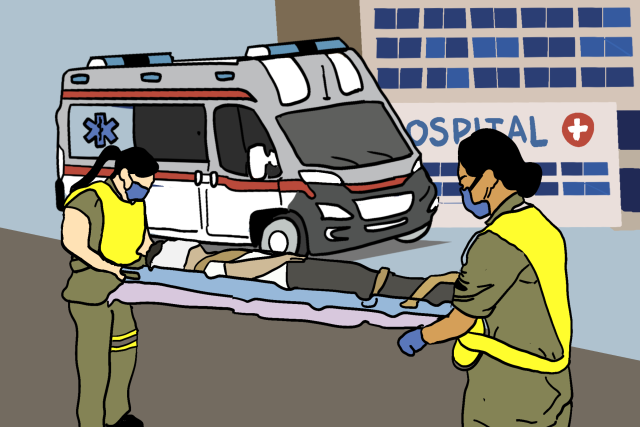[ad_1]
The quality of a stroke patient’s care does, in part, depend on their race and the overall socioeconomic status of their neighborhood, according to a study published by University of Michigan researchers. The researchers collaborated with others from Brown University and the University of Chicago to analyze discrepancies in prehospital care between patients of different races, ethnicities and socioeconomic backgrounds.
Two main prehospital care criteria were used to analyze data. The first is onset to arrival time, or the time it takes for a patient to reach the hospital after identifying stroke symptoms and calling Emergency Medical Services. The second is prehospital notification, or if EMS notifies the hospital of a stroke patient’s condition before they reach the Emergency Department.
The study found that Black stroke patients, on average, arrive at the hospital 28 minutes later than white patients, and hospitals are 20% less likely to be notified of a Black patient’s status before arrival as compared to white patients. Furthermore, the study assessed that Black and Hispanic patients are less likely to receive effective treatments for acute strokes, partially as a result of delayed prehospital notifications and longer OTA intervals. The study also concluded that low neighborhood socioeconomic status is associated with lower stroke treatment rates, worse stroke outcomes and higher stroke mortality rates.
Dr. Brian Stamm, a U-M Institute for Healthcare Policy and Innovation national clinician scholar and one of the lead researchers on this study, emphasized in an email to The Michigan Daily that hospitals have effective treatments for strokes, but the time frame in which patients are treated plays a critical role in their outcomes.
“We have highly effective treatments for stroke,” Stamm wrote. “Yet many stroke patients do not receive these therapies due to late presentation to the hospital. Treatments for stroke are incredibly time dependent. With each passing minute, (stroke) treatments gradually become less effective. So, we often refer to the concept of ‘time is brain’ and recommend treatment as soon as it can be safely done.”
To conduct this study, researchers analyzed data collected by the American Heart Association Get With the Guidelines stroke registry between 2015 and 2019. Researchers examined data of more than 600,000 patients — of these patients, 70% were white. Researchers found no difference in the frequency at which Black and white patients called EMS.
To measure the socioeconomic status of neighborhoods, researchers used a previously established measurement called the “social deprivation index,” the product of combining demographic measures such as education levels, poverty and access to transportation. Researchers found that high SDI in a county is associated with a decreased prehospital notification and an increased OTA.
The study found that even when controlling for socioeconomic status and race, there is a much more substantial impact on stroke patient’s OTA intervals than county level factors.
Public Health senior Sam Riordan discussed the impact interpersonal discrimination and structural inequality can have on treatment outcomes.
“In health care, systemic inequities can significantly affect the quality of care received by minority populations,” Riordan said. “Examples include implicit bias of providers in treatment options, (or) longer response times of emergency services. … These findings highlight the need for quality improvement initiatives within EMS operations to address and improve health equity efforts.”
Although the primary outcomes of the study focused on findings related to Black patients, researchers concluded women also had consistently longer OTA intervals and decreased rates of prehospital notification compared to men.
Dr. Lewis Morgenstern, a professor of neurology, neurosurgery and emergency medicine at the U-M Medical School and epidemiology professor at the School of Public Health, reflected on the importance of the study and how its findings demonstrate the need for large-scale improvements within the medical field in an email to The Daily.
“This is very important, since early paramedic notification of the hospital allows hospitals to mobilize their stroke team and treat patients faster,” Morgenstern wrote. “This landmark research suggests that there are still racial inequities in how we care for very sick patients with treatable diseases. This study should serve as a wake-up call to improve the care of Black Americans in emergency health situations.”
Daily Staff Reporter Sasha Kalvert can be reached at skalvert@umich.edu.
Related articles
[ad_2]
Source link











